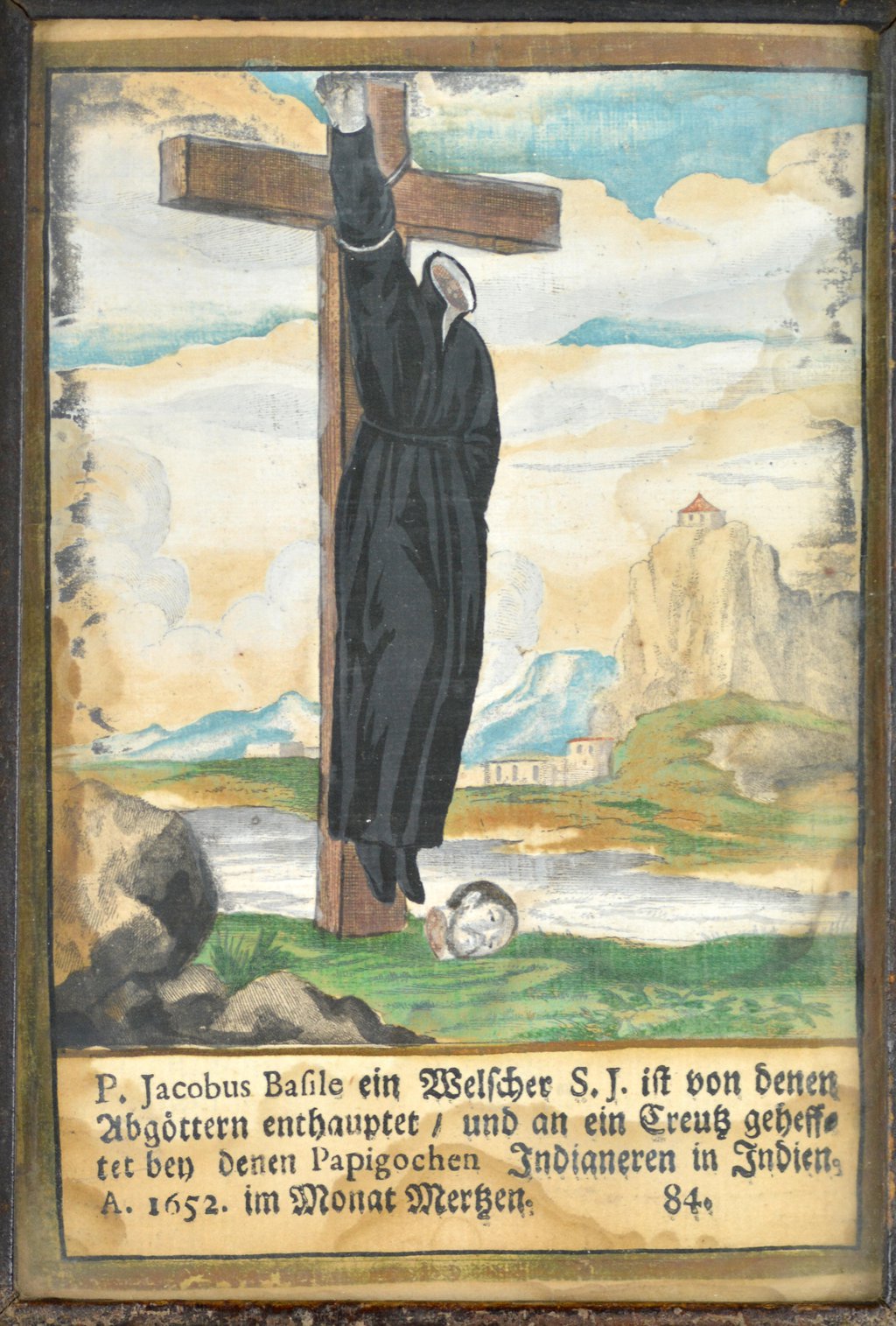162 ways to die
What is it?
Museums are institutions that care for a collection of artefacts and objects of artistic, cultural or scientific importance. Each object has a story tell, about the object itself and the context it was created in. More often than not, the objects themselves have been designed to tell a story about individuals and human societies. Out of context and several centuries, after the objects have been initially created, they are often hard to read. It is a challenge for museums to tell the stories of exhibited objects in a digestible format.
162 ways to die is an interactive installation making the stories behind 162 copper engraving of Jesuit monks in the 17th century accessible to museum visitors in an engaging way.
“It was important for us to give a delicate topic like death the respect it deserves. But at the same time, we wanted to create something that doesn’t take itself too seriously.”
How does it work?
Our prototype consists of a wooden platform in front of a screen and seven wooden figures, each representing a Jesuit monk. Each figure is connected with a particular Jesuit and its story. On the bottom of each figure, there is an RFID chip which triggers the playback of the corresponding story.

Open invitation

Placing the figure

The story starts

What did we start from?
We received 162 copper engraving from the Museum Landsberg am Lech. Each engraving depicts at least one Jesuit monk in their moment of death or another significant event in their lives, with a short text below each engraving. Besides the engravings, we received a table with details on each Jesuit and a book telling more on the adventurous lives of the monks.



Physical Prototyping
We wanted to explore how we could tell a story tell an audiovisual story with a screen where we incorporated the physical figure. But also we wanted to get a better idea of what size the screen and the figure would need to play well together as well as where the figure would be placed and where it would go once the story is finished.



Although we did not intend to tell the story of every Jesuit, it was soon apparent that we need to make our figures unique, so that a person who wants to listen to multiple stories could tell the figures apart.


Visual Design
Our early prototype visually focused on the journey of the Jesuit monk as well as on the cause of death. Going forward from that quick prototype, we had several aspects which we wanted to explore further.
We observed that the audio storytelling worked tremendously. However, highlighting each pivotal moment of the story visually was limiting to the imagination of the visitor. That is why we wanted to explore further how we could complement the audio narration in a visual form. Two crucial aspects which we explored where how many scenes we would show per Jesuit monk and how abstract we could be in the complementary visuals.






We settled on showing one scene per Jesuit monk. Each scene needs to set a mood and accommodate our initial magic moment of placing the figure into the scene. Therefore the scene could not be too abstract. Besides, the visuals needed to incorporate some cycle, like sunrise and sunset or tree leaves falling, which would provide an indicator of how long the story would last.



Coding Da Vinci
This project was done during the Coding Da Vinci Süd 2019 hackathon, where the project also received two out of five recognitions and lots of positive feedback. Coding Da Vinci is a culture hackathon, where cultural institutions provide digitalised objects out of there collection to the hackathon participants to build upon them or build something completely new.


Outlook
The Museum Landsberg am Lech and we are working on bringing our installation into their permanent exhibition. Currently, the museum is undergoing a renovation after which our installation will be integrated into the permanent exhibition, provided everything works out.
